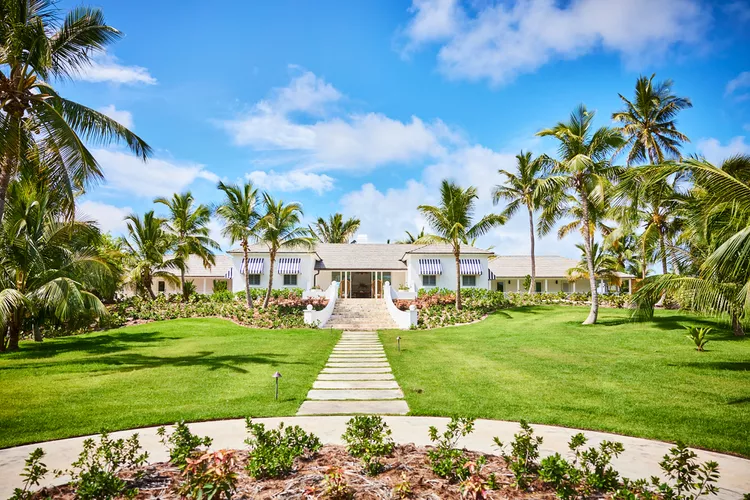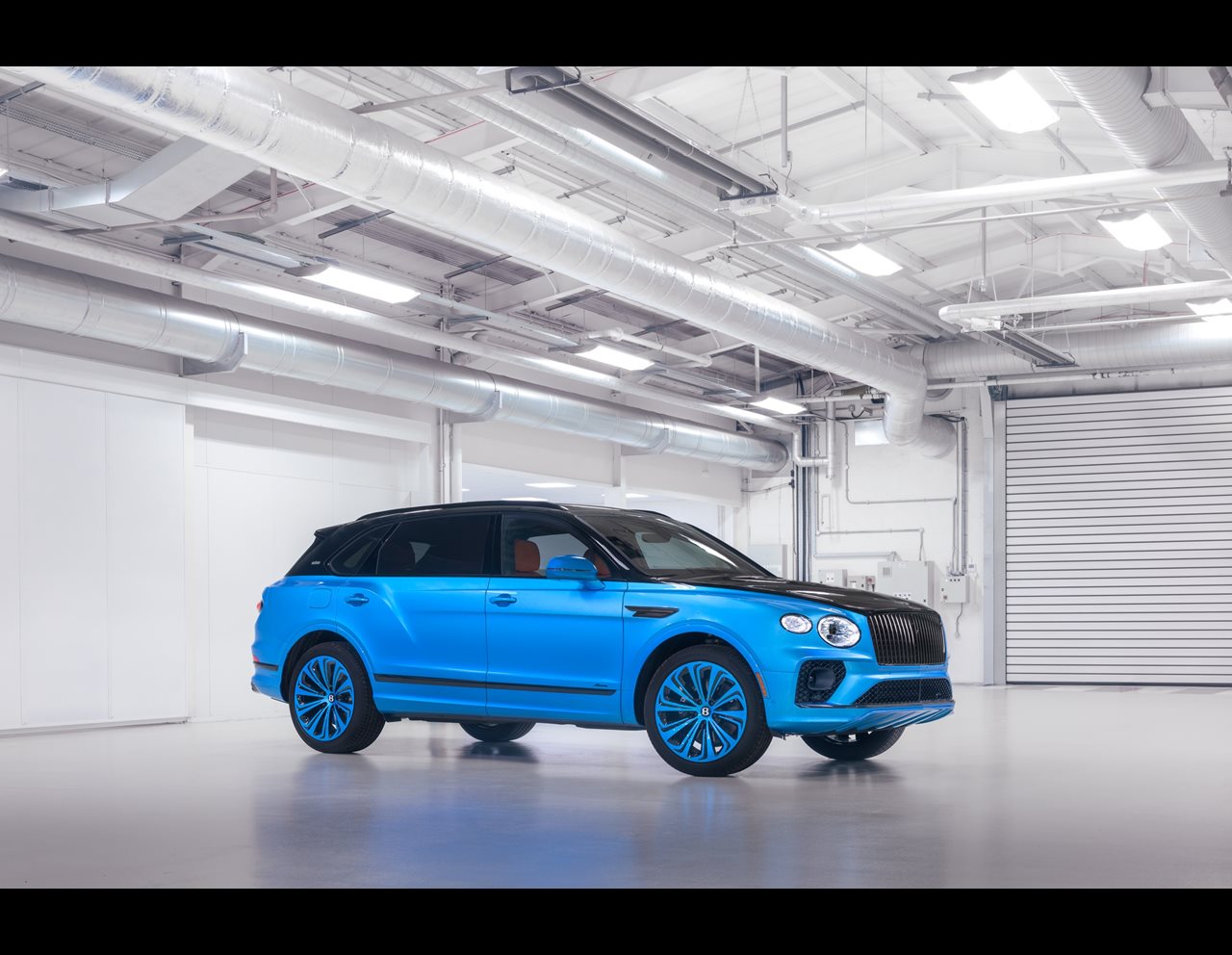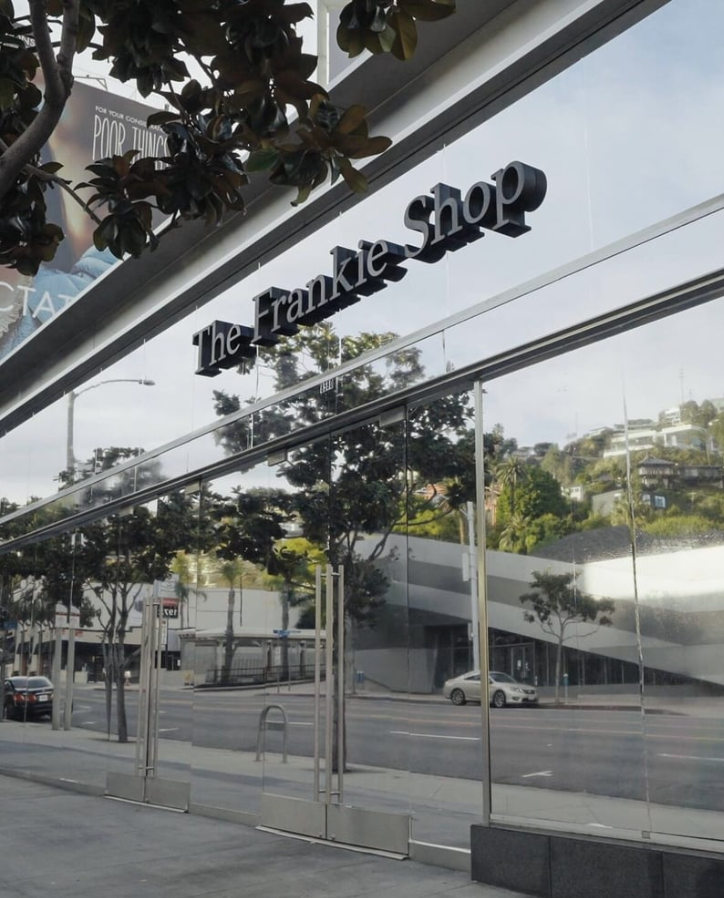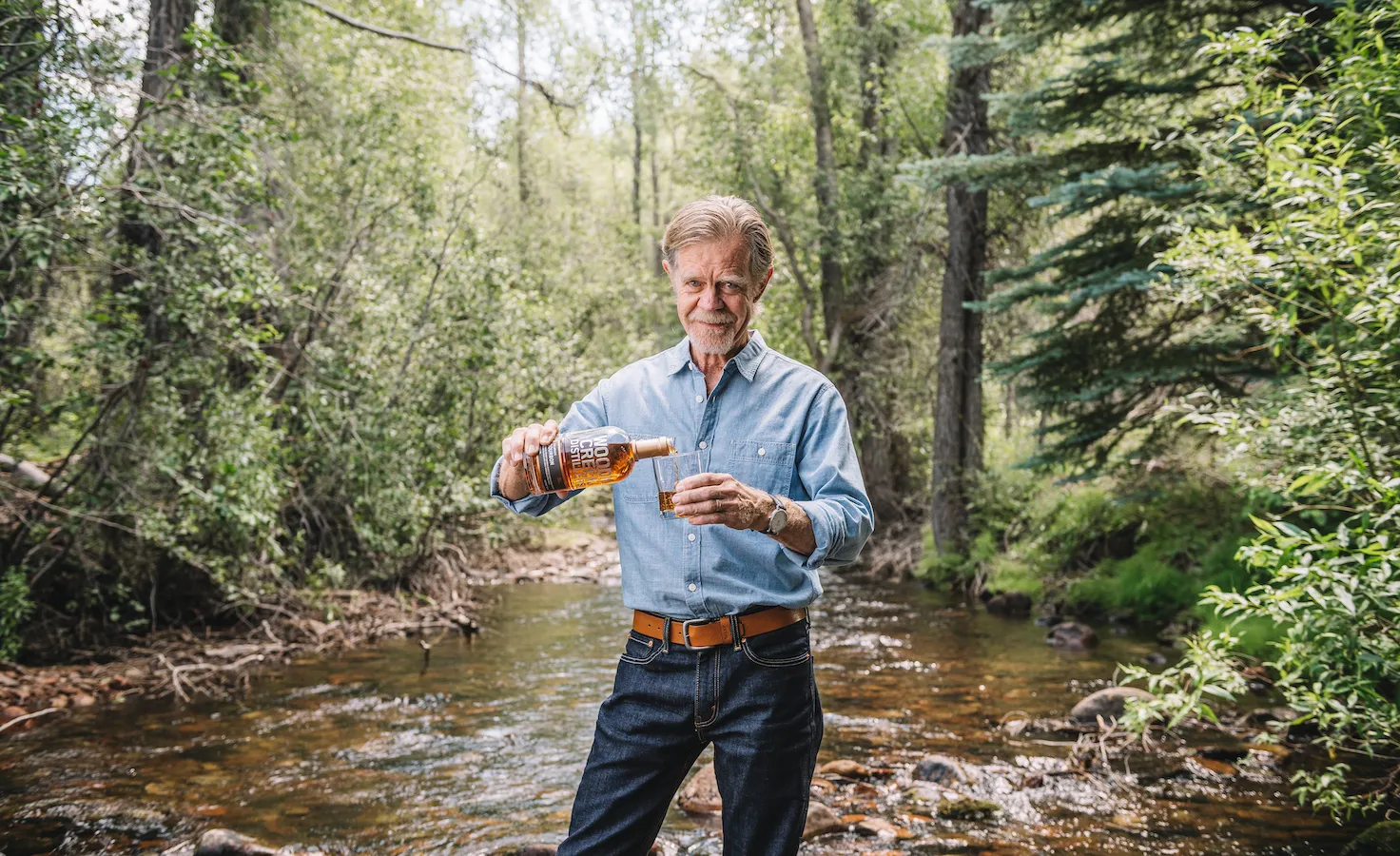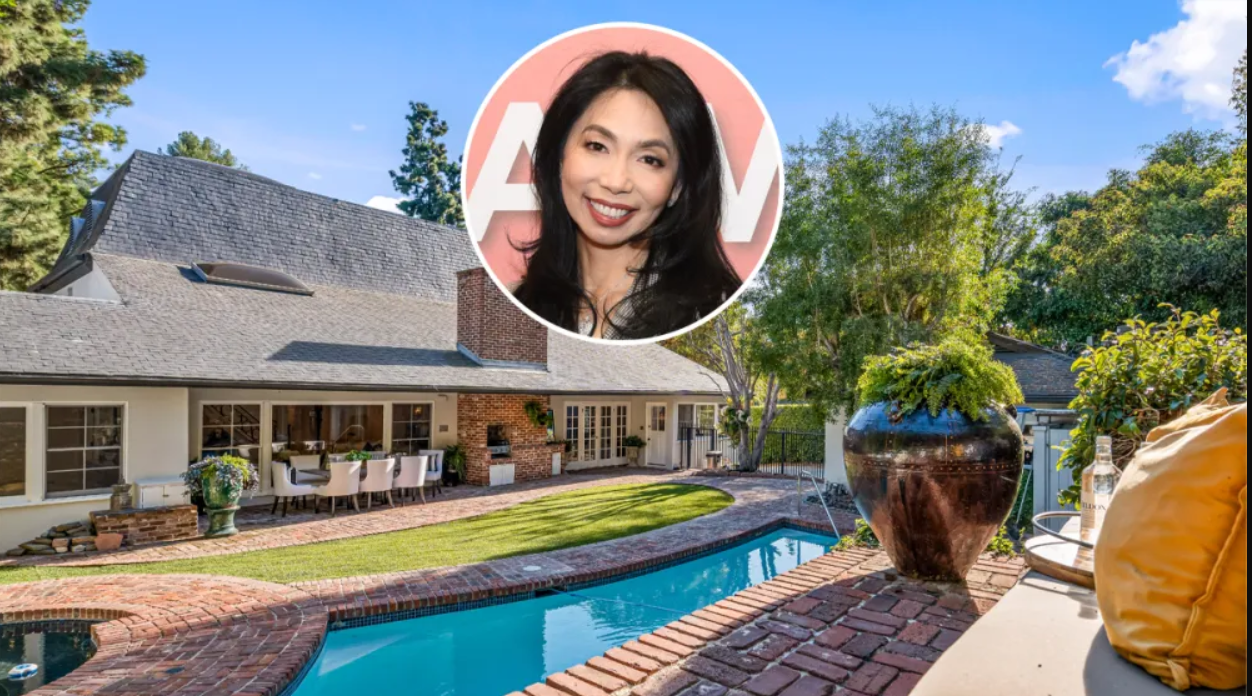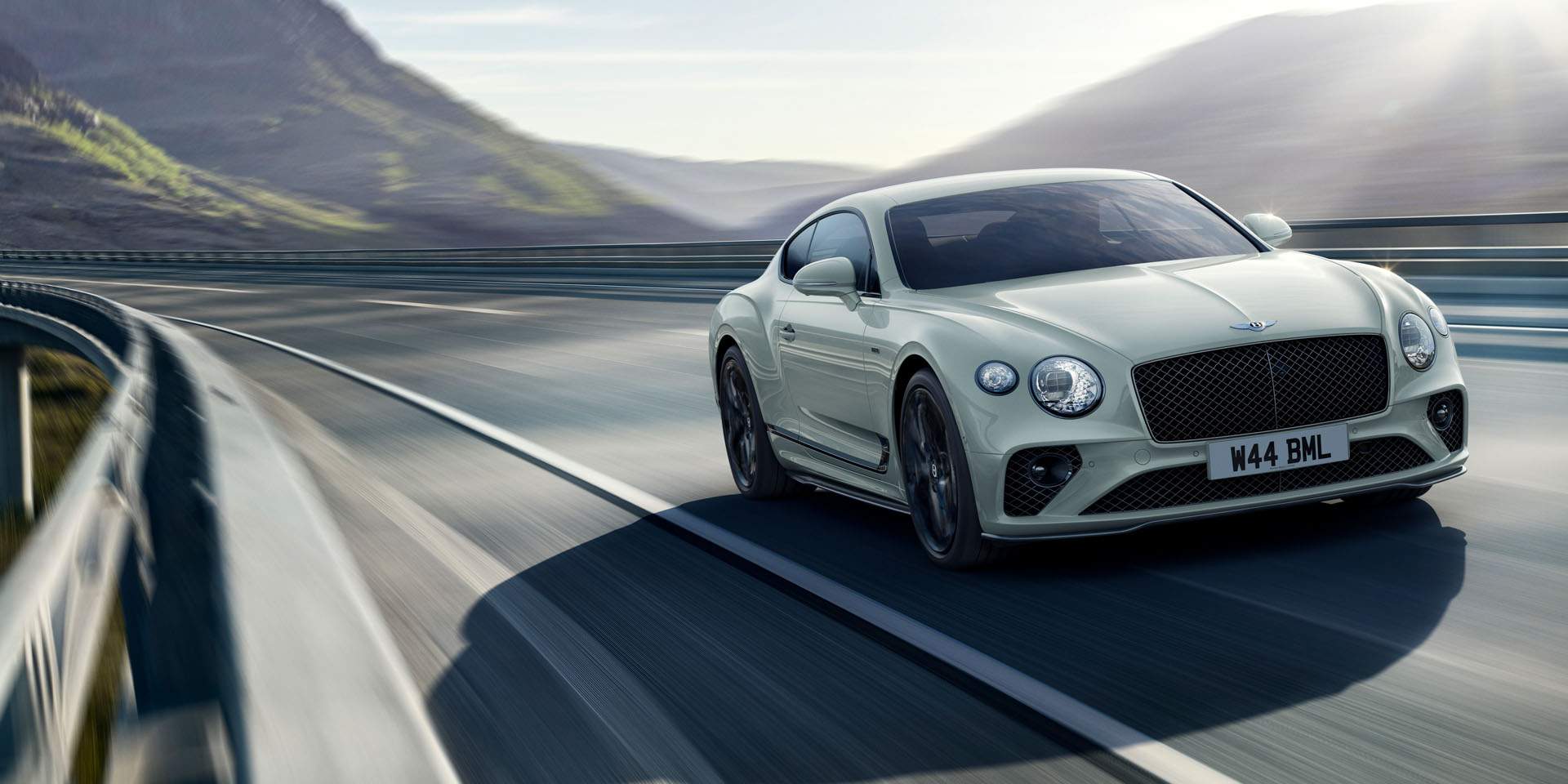In a world where visual storytelling reigns supreme, the art of interior design photography has emerged as a captivating journey through luxury and creativity. Step into the luxurious hotel and restaurant interiors, where every corner tells a unique story of luxury and elegance. This is not just about capturing spaces; it’s about encapsulating the very essence of a place in a single frame.
Intriguing, isn’t it? In our modern age, where space aesthetics are pivotal in shaping our experiences, interior design photography has become more relevant than ever. It’s the art of transforming these meticulously crafted environments into visual masterpieces, a craft that marries technical expertise with an artist’s eye for detail.
Imagine yourself in a lavishly designed hotel lobby, where every element, from the sweeping chandeliers to the plush velvet upholstery, exudes luxury. Or you’re in a restaurant where the interplay of colors, textures, and decor creates an ambiance that’s nothing short of magical. These are the moments that interior design photographers capture, turning them into images that not only please the eye but also evoke emotions.
In this journey, we will explore the techniques, the artistry, and the craftsmanship that go into photographing extravagant hotel and restaurant interior design details. We’ll delve into the world of equipment, lighting mastery, composition, and post-processing – the toolkit of the interior design photographer.
But this isn’t just about the technical aspects; it’s about the story that each image tells. How does a well-composed photograph make you feel like you’re in the room, experiencing the ambiance, the luxury, and the creativity? That’s the magic we’re about to reveal.
So, whether you’re a budding photographer looking to turn your passion into a profession or simply someone who appreciates the art of capturing moments in the most beautiful of settings, join us on this visual voyage. Together, we’ll learn to transform ordinary spaces into extraordinary graphic tales, each frame a narrative of elegance and extravagance.
The Art of Interior Design Photography
Capturing the Essence
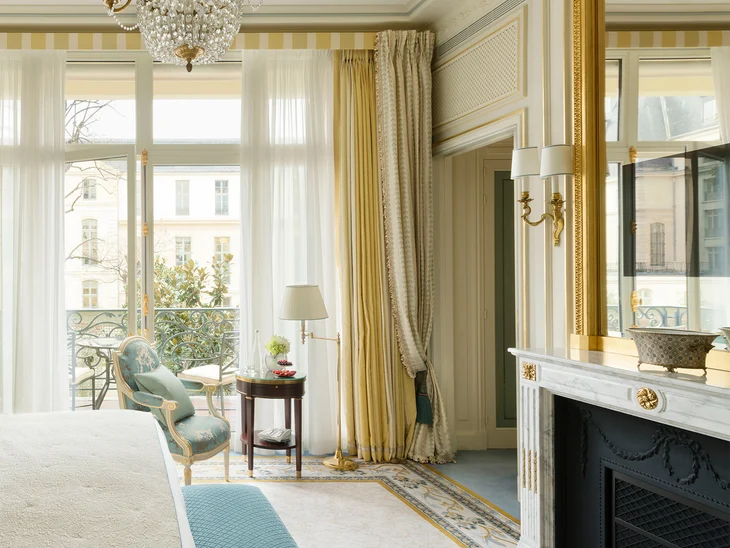
Interior design photography is an art form that transcends the mere act of taking pictures. It’s about delving deep into the soul of a space and conveying its essence through the lens. In this section, we’ll explore capturing the ambiance, focusing on architectural details, and utilizing light and composition to create stunning interior design photographs.
Conveying Ambiance: When you enter a well-designed hotel lobby, you’re immediately struck by the ambiance. It’s not just about what you see; it’s about what you feel. As an interior design photographer, your mission is to translate that ambiance into a visual story. Whether it’s the cozy warmth of a restaurant or the grandeur of a hotel, the photographs you take should transport the viewer to that moment.
Architectural Details: The devil is in the details, they say, and in interior design photography, this rings truer than ever. Highlighting architectural details can make or break your shot. From the intricacies of a finely crafted staircase to the patterns on the ceiling, every detail contributes to the overall narrative of the space. The art lies in capturing these details in a way that justifies their significance.
Light and Composition: Lighting is the brushstroke of an interior design photographer. Whether working with natural light streaming through large windows or carefully placed artificial lighting, it’s crucial to understand how to harness and manipulate light to your advantage. The interplay of light and shadow can bring out the depth and texture of a room, creating visual interest. Composition, on the other hand, is about framing the scene in a way that draws the viewer’s eye to the most critical elements. The rule of thirds, leading lines, and perspective are your tools for creating balanced and visually appealing shots.
Equipment and Preparation
Choosing the Right Tools
When it comes to equipment for interior design photography, the right choice can make a world of difference. Let’s delve into the selection of cameras, lenses, and essential accessories vital to your success in this field.
Choosing the Right Camera and Lenses: Your camera is your best friend in this journey. Opt for a camera with a full-frame sensor that excels in low-light conditions, as many interior spaces demand. Prime lenses with wide apertures are excellent for creating a shallow depth of field, drawing attention to specific details while blurring the background. Zoom lenses, on the other hand, provide flexibility in framing your shots.
Essential Accessories: Your camera is just the beginning. Interior design photography often requires a sturdy tripod to maintain stability in low-light conditions, remote triggers to reduce camera shake, and lens filters to control light and reflections. These accessories can significantly enhance the quality of your shots.
Pre-shoot Planning and Scouting: Before you even step into the location, a well-thought-out plan is essential. Scout the area to understand the best angles, lighting conditions, and critical features that should be emphasized. Planning your shots in advance will save time and ensure you capture the most vital elements of the interior.
Lighting Mastery
Painting with Light
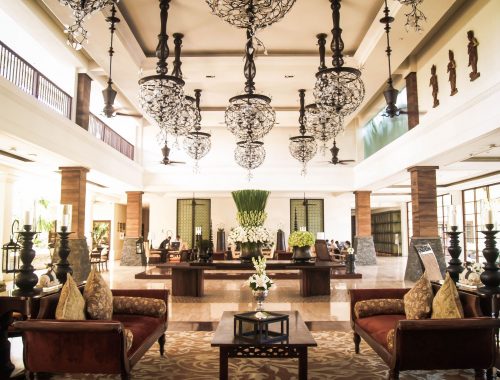
Lighting mastery is at the heart of interior design photography. In this section, we’ll explore the art of lighting, both natural and artificial, and the techniques for controlling light and shadows to create captivating photographs.
Natural vs. Artificial Lighting: Natural light can be a photographer’s best friend, casting a soft, inviting glow on the scene. However, it’s only sometimes readily available or ideal for all situations. Artificial lighting, such as strobes and continuous lights, gives you control over the illumination. Understanding when to use each type of lighting is essential for producing compelling interior design photographs.
Techniques for Controlling Light and Shadows: In interior spaces, managing light and shadows is critical. Diffusers and reflectors can soften harsh sunlight while polarizing filters can reduce reflections on glass and other surfaces. Experimenting with lighting angles and intensity can help you create the desired mood for your photographs. The skill lies in manipulating light to reveal the interior’s character while maintaining a balance between highlights and shadows.
Interior design photography is an intricate blend of technical proficiency and artistic expression. It’s about capturing the soul of a space, highlighting architectural details, and mastering light and composition to create captivating visual stories.
Mastering Composition and Framing in Interior Design Photography
In interior design photography, where every detail matters, mastering composition and framing is the secret to capturing genuinely captivating images. It’s not just about what you shoot; it’s about how you frame it and the story you tell through your composition. In this section, we will delve deep into the art of composition and framing to elevate your interior design photography to the next level.
Rule of Thirds: Creating Balanced and Visually Appealing Shots
The rule of thirds is one of the fundamental principles of composition in photography, and it plays a crucial role in creating visually appealing interior design photographs. Imagine dividing your frame into a 3×3 grid, both horizontally and vertically, resulting in nine equal sections. The points where these lines intersect are known as “power points.” Placing your subject or vital elements along these power points or the pipes can lead to a well-balanced and aesthetically pleasing shot.
The rule of thirds can be applied in various ways in interior design photography. For example, positioning a striking piece of furniture or a captivating design detail along one of these gridlines can create a sense of balance and harmony in the composition. It also helps to avoid placing the most critical elements right in the center of the frame, as this can often result in a static and less engaging photograph.
By adhering to the rule of thirds, you can guide the viewer’s eye and create a composition that draws them into the image, encouraging exploration and appreciation of the interior space.
Leading Lines: Guiding the Viewer’s Eye
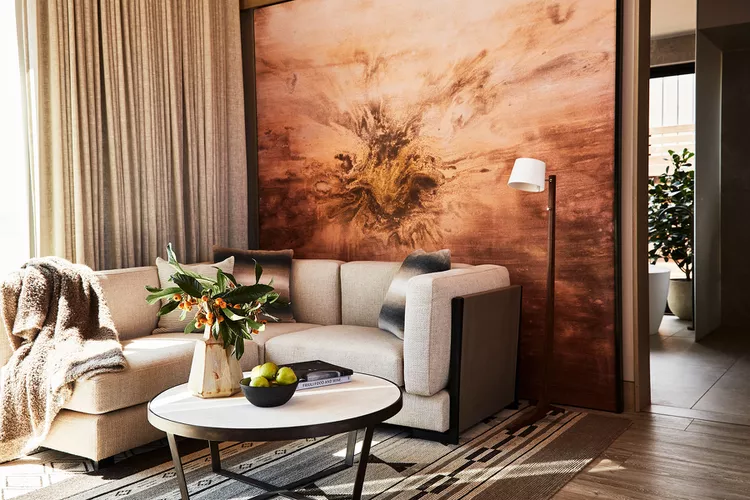
Leading lines are powerful tools in composition, serving as visual pathways that guide the viewer’s eye through the photograph. In interior design photography, where spaces are often filled with lines and architectural elements, mastering the use of leading lines can bring depth and dynamism to your images.
Incorporating elements like corridors, staircases, or even rows of pillars can serve as natural leading lines that draw the viewer into the image. These lines create a sense of movement, guiding the eye towards the focal point of the photograph.
Additionally, you can introduce leading lines by placing objects or furniture. For example, a dining table with chairs arranged in a specific pattern can lead the viewer’s eye toward the center of the room, highlighting the design and ambiance.
Understanding how to leverage leading lines in your composition allows you to tell a visual story within your interior design photographs, leading the viewer through the space and emphasizing the key elements that make the interior remarkable.
Perspective and Scale: Conveying Depth and Space
Perspective and scale play a pivotal role in interior design photography. They determine how the viewer perceives the depth and space within the photographed area. As an interior design photographer, you have the creative freedom to play with angles, providing a unique and dynamic perspective on the space you’re capturing.
By experimenting with different angles, such as low-angle shots that emphasize the height of a room or high-angle pictures that showcase intricate details on the floor, you can convey a sense of depth and dimension. These perspectives add layers to your composition, making the interior more engaging and visually attractive.
Scale, however, involves the relationship between objects within the frame. Placing a smaller object next to a larger one, for instance, can accentuate the sense of scale and emphasize the grandeur of a space.
Remember that perspective and scale are your tools for creating visually striking interior design photographs. They allow you to capture the essence of the space, highlighting its uniqueness and providing viewers with a deeper appreciation of the interior’s character.
In interior design photography, mastering composition and framing is the gateway to creating images that not only showcase the details of a space but also tell a compelling visual story. By applying the rule of thirds, using leading lines to guide the viewer’s eye, and experimenting with perspective and scale, you can elevate your interior design photography to new heights. These techniques enable you to convey the depth, balance, and harmony within the interiors you capture, resulting in visually stunning and engaging photographs that resonate with your audience.
Showcasing Extravagant Details in Interior Design Photography
In the realm of interior design photography, it’s the extravagant details that often steal the show. Whether it’s the intricate textures, the abundant materials, or the carefully selected color palettes, these details are the heart and soul of a well-designed space. In this section, we will explore the art of showcasing these extravagant details through the lens, ensuring they take center stage in your interior design photographs.
Textures and Materials: The Heart of Opulence

Opulent textures and materials are the foundation of many luxurious interior designs. As an interior design photographer, you highlight these elements and convey their tactile qualities through imagery.
Textures can range from the softness of plush velvet cushions to the roughness of exposed brick walls. When photographing these textures, consider the interplay of light and shadow. Side lighting can accentuate textures by creating pronounced shadows, while front lighting can reveal the surface’s details more evenly.
Materials often define the luxury of a space. This can include the gleam of polished marble, the warmth of wooden accents, or the sheen of metallic finishes. Your photographs should capture the material’s essence – its luster, grain, and reflective properties. How light interacts with these materials can make them appear in your images.
A macro lens can be your best friend when capturing textures and materials, allowing you to get up close and personal with the elements that make the interior extravagant. These detailed shots give viewers an intimate look at the materials and textures that define the space’s opulence.
Color Palettes: The Psychology of Luxury
Color is an integral part of interior design, and it can significantly impact the perceived luxury of a space. As an interior design photographer, you should understand the psychology of color and how different color palettes can evoke various emotions.
Consider the rich, regal tones of deep purples and gold in a luxury hotel’s lobby or the serene, coastal blues and whites in an upscale beachfront restaurant. These color choices are not random; they are carefully curated to create a particular ambiance.
When photographing interiors, it’s essential to capture the essence of the color palette. Use color to convey the mood of the space. Rich, warm colors can create a sense of coziness and luxury, while cool, muted tones can evoke a calm and sophisticated atmosphere.
Pay attention to how different colors interact within the frame. Complementary colors, for example, can create a vibrant and harmonious visual experience, while contrasting colors can add drama and excitement.
Your photographs should not only document the colors used but also reflect how these colors contribute to the overall luxury and appeal of the interior.
Decor and Accents: Elevating Interior Elegance
The devil is in the details, and when it comes to interior design, it’s often the decor and accents that define the space’s elegance. From intricate wall art to carefully curated decor items, these elements add character and depth to the interiors.
When photographing decor and accents, aim to make them the focal point of your images. Utilize composition techniques such as the rule of thirds and leading lines to draw the viewer’s eye to these details. Macro shots can highlight the fine craftsmanship and unique features of decor items.
Consider the play of light on decor elements. A well-placed spotlight can create a stunning contrast between a decorative item and its surroundings, adding drama and depth to the photograph.
You aim to showcase the thought and care that goes into selecting and arranging decor and accents. These elements provide the finishing touches that make an interior extravagant, and your photographs should celebrate their significance.
In the world of interior design photography, showcasing extravagant details is an art that requires a keen eye for textures, materials, color palettes, and decor accents. These details are the soul of luxury. Your photographs should ensure they shine brightly in every frame. By capturing the tactile qualities of textures, the essence of materials, the psychology of color, and the fine details of decor, you can create images that truly convey the extravagance and elegance of the interiors you photograph.
Post-Processing for Perfection in Interior Design Photography
The art of interior design photography doesn’t end when the shutter clicks. It’s just the beginning. Post-processing plays a pivotal role in transforming raw images into captivating visual narratives that truly showcase the essence of the space. In this section, we’ll delve into the world of post-processing, examining the choice of editing software and the workflow for enhancing your interior design photographs to perfection.
Editing Software: Choosing the Right Post-Processing Tools
The first step in post-processing for interior design photography is selecting the right editing software. Various software options are available, each with its unique features and capabilities. Here, we’ll explore some of the most commonly used tools for interior design photography post-processing.
Adobe Lightroom:
Adobe Lightroom is a favorite among photographers for its robust features and user-friendly interface. It allows for non-destructive editing, meaning your original image remains intact while you make adjustments. Lightroom is ideal for color correction, exposure adjustments, and cropping. It also enables you to organize and catalog your photos efficiently.
Adobe Photoshop:
Adobe Photoshop is another powerful tool that provides extensive control over image editing. It’s perfect for advanced retouching, compositing, and creating complex masks. When fine-tuning specific areas of your image or removing distractions, Photoshop is your go-to choice.
Capture One:
Capture One is renowned for its superior color grading and tethering capabilities. Photographers who require precise color control often prefer this software. It also excels in handling raw files and provides remarkable detail and sharpness.
DxO PhotoLab:
DxO PhotoLab is known for its exceptional noise reduction and optical corrections. If you’re dealing with low-light interior shots or architectural distortion, DxO PhotoLab can be a valuable addition to your editing toolkit.
The choice of editing software depends on your specific needs and preferences. Many photographers use a combination of these tools to make the most of each software’s strengths. It’s essential to familiarize yourself with your selected software’s features and functionalities to unleash its full potential in enhancing your interior design photographs.
Retouching and Enhancement: Refining Your Interior Images
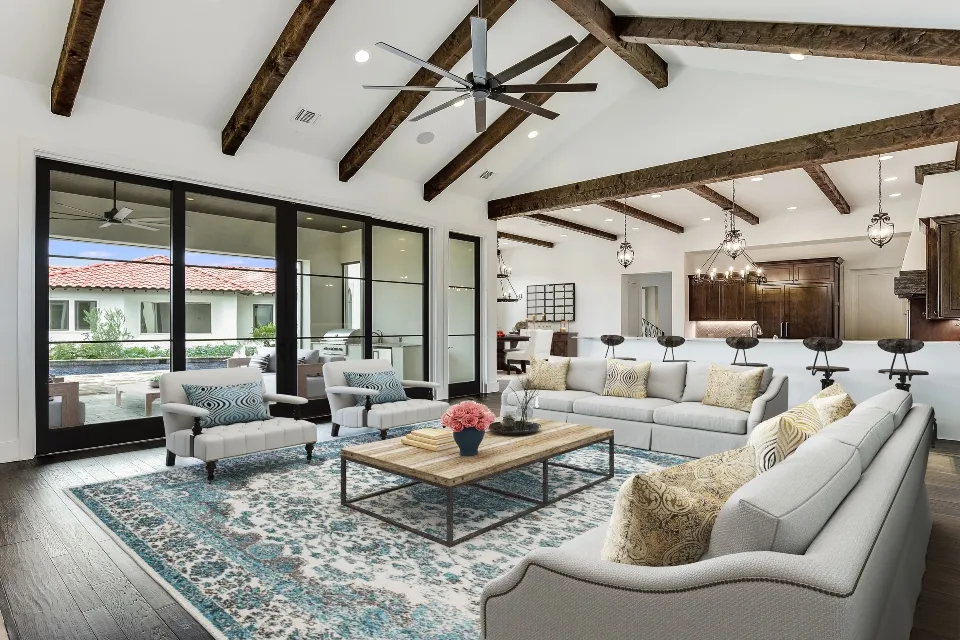
Once you’ve selected your editing software, the real work begins. Post-processing involves several vital tasks, each aimed at refining and enhancing your interior design photographs.
Color Correction:
Ensuring that the colors in your images are accurate and consistent is vital in interior design photography. Color correction involves adjusting the white balance, saturation, and hue to ensure that the colors in your photos match the reality of the space.
Exposure Adjustment:
Balancing exposure is crucial, especially when dealing with challenging lighting conditions. By adjusting highlights, shadows, and midtones, you can ensure that all areas of your image are well-exposed.
Lens Correction:
Interior shots can sometimes suffer from lens distortions like barrel distortion or chromatic aberration. Post-processing software often includes lens correction tools to rectify these issues, ensuring straight lines and minimal optical defects.
Cloning and Healing:
Eliminating distractions or blemishes from the image is a crucial aspect of interior design photography. The cloning and healing tools in your editing software allow you to remove unwanted elements seamlessly.
Sharpening and Noise Reduction:
Ensuring that your images are crisp and free of noise is essential. Sharpening enhances fine details, while noise reduction minimizes graininess, particularly in low-light conditions.
Post-processing is about achieving the vision you had when you first captured the interior. It’s a process that involves careful consideration of color, exposure, and composition to create a photograph that tells the story of the space in its most captivating form.
As an interior design photographer, your role doesn’t end when the photo shoot is over. Post-processing is where you sculpt your raw images into polished masterpieces that convey the ambiance, textures, materials, color palettes, and decor accents of the interior. It’s the final step in ensuring that your photographs represent the luxury and elegance of the spaces you capture.
Conveying the Experience: The Essence of Interior Design Photography
Interior design photography isn’t merely about capturing rooms and spaces; it’s about creating visual narratives that transport viewers into the heart of an experience. The ability to convey the ambiance, emotions, and overall essence of space sets exceptional interior design photography apart. In this section, we’ll delve into the art of getting the experience through your images, creating a connection beyond the visual.
Creating an Emotional Connection
Photography has a unique power to evoke emotions, and interior design photography is no exception. The spaces you capture are carefully designed to create specific moods and feelings, and your photographs should aim to convey those emotions.
Capturing Coziness: Imagine a beautifully designed living room with a roaring fireplace and plush, inviting furniture. Your photographs should make viewers feel the warmth and comfort of that space. Use lighting, composition, and color to create a sense of coziness that resonates with your audience.
Elegance and Luxury: Opulent interiors in hotels or high-end restaurants are often designed to exude sophistication and luxury. Through your images, you can convey the richness of materials, the sparkle of polished surfaces, and the sense of grandeur. When viewers look at your photographs, they should feel as though they’re in opulence.
Serenity and Tranquility: Spa interiors, beachside resorts, or wellness centers are designed to offer peace and relaxation. Your photos should capture the tranquility of these spaces – the soft lighting, the gentle color palettes, and the serene decor. When viewers see your images, they should experience a moment of serenity.
Telling a Visual Story
An exceptional interior design photograph doesn’t merely show a space; it tells a story. It guides the viewer through the area, highlighting its most captivating elements and inviting exploration.
The Grand Entrance: Just as a grand entrance sets the tone for what’s inside, your photographs should offer an enticing introduction. Capture the entrance in a way that draws viewers in, making them curious to see more.
The Focal Points: Every well-designed interior has focal points – key areas or elements that grab attention. It could be a stunning chandelier, a statement piece of furniture, or an art installation. Your photographs should emphasize these focal points, making them the show stars.
Flow and Movement: Consider the flow and movement within the space. A well-composed series of images can guide viewers through the interior, allowing them to experience it as if walking through it themselves. Utilize leading lines, perspective, and a carefully planned sequence of shots to create this flow.
The Importance of Details
In interior design photography, the devil is in the details. While wide-angle shots capture the overall ambiance, it’s the close-ups and detailed images that provide a more intimate and immersive experience.
Close-Ups of Textures: Capture the tactile quality of materials and textures. Show the softness of a velvet couch, the smoothness of marble, or the roughness of reclaimed wood. Viewers should feel like they can touch these elements.
Detail Shots of Decor: Decor and accents are the soul of interior design. Photograph them in a way that highlights their craftsmanship and uniqueness. From the stitching on a cushion to the intricate patterns of a rug, these details add character and depth to the space.
Unique Design Accents: Each interior has unique design accents – a piece of art, a sculptural item, or a distinctive piece of furniture. These accents can define the space and give it personality. Your photographs should celebrate these accents, making them memorable and visually striking.
Conveying the experience through interior design photography is about making viewers feel like they’ve stepped into the space. It’s about evoking emotions, telling a visual story, and highlighting the intricate details that make the interior special. When viewers look at your photographs, they should not only see the space but also feel a connection to it.
Conclusion: Mastering the Art of Interior Design Photography
In the mesmerizing world of interior design photography, every click of the shutter captures more than just rooms and spaces; it encapsulates the very essence of a place. Throughout this journey, we’ve explored the multifaceted art of interior design photography, from capturing ambiance and architectural details to mastering composition, showcasing extravagant materials, and perfecting post-processing. Now, as we approach the conclusion of our exploration, it’s time to reflect on the profound impact of this art form and the enduring connection it forges between viewers and the spaces it portrays.
Interior design photography is a gateway to experiencing the soul of a space without physically being present. It takes viewers on a visual journey, inviting them to explore the ambiance, appreciate intricate textures, immerse themselves in color palettes, and marvel at decor details. It’s an art that marries technology with storytelling, enabling photographers to convey emotions and create a deep connection between viewers and the interiors they capture.
Technical proficiency in interior design photography is the foundation upon which artistry flourishes. Photographers wield cameras, lenses, and lighting with precision, using editing software to refine their work. Yet, it’s the creative eye, the understanding of composition, and the ability to tell a compelling visual story that elevates the craft to an art form. The synergy of technology and artistry is at the core of interior design photography’s impact.
At the heart of interior design photography is the ability to convey ambiance and evoke emotions. Whether it’s the cozy warmth of a well-designed living room, the grandeur of a luxury hotel, or the serenity of a spa, photographs are more than images; they’re invitations to experience. Through careful lighting, composition, and choice of elements, photographers create a mood that resonates with viewers.
Interior design photographers are storytellers, and their images are chapters in a narrative. Each photograph is a part of the story, guiding viewers through the space, emphasizing focal points, and creating a seamless flow. It’s not merely about showcasing rooms; it’s about engaging viewers in a visual journey that unfolds one frame at a time.
Details matter, and in interior design photography, they matter profoundly. Close-ups of textures, decor, and unique accents provide an intimate view of the space. They make viewers feel they can reach out and touch the materials, appreciate the craftsmanship, and admire the character that defines the interior. It’s the details that breathe life into a photograph.
The journey through interior design photography showcases the symbiotic relationship between technology and storytelling. Cameras, lenses, lighting, and editing software empower photographers to capture the intricacies of a space. However, it’s the human touch, the creative choices, and the ability to convey a narrative that makes interior design photography a compelling art form. In an age where technology advances and storytelling remains timeless, this relationship is more profound than ever.
As we conclude our exploration of interior design photography, we’ve ventured through the realms of technique and artistry, technical proficiency and creative vision, and the ability to create visual stories that resonate with viewers. Each photograph is a testament to the photographer’s skill in translating a space’s ambiance and emotion into a visual experience. It’s a testament to the enduring power of technology and storytelling working in unison, producing captivating and evocative images.
In a world where visuals speak volumes, interior design photography is a language that communicates more than words. It’s a form of art that invites viewers to step into the spaces it portrays, experience their essence, and forge a connection that transcends the visual. The power of interior design photography lies in its ability to turn rooms and spaces into captivating stories, where every image is a chapter, and every detail is a character.


